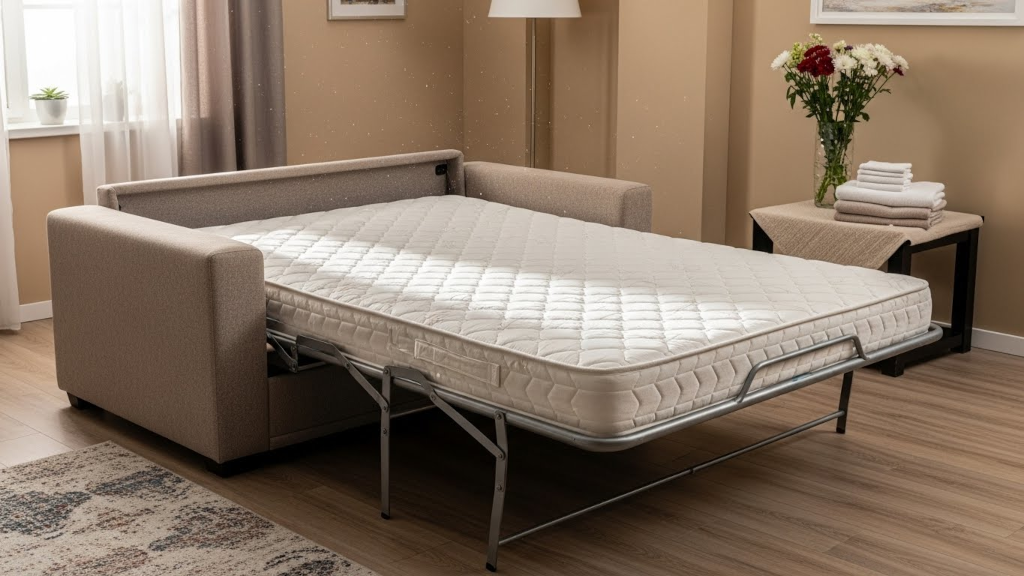A home can appear spotless and still carry a smell that feels damp, stale, or slightly sour. Many people clean weekly, organize rooms, and wipe down surfaces but still notice a lingering musty scent that returns no matter what they do. This odor becomes stronger in fall and winter when windows stay closed and indoor air does not circulate as freely.
A musty smell does not mean your home is dirty. It usually means moisture and odor molecules are trapped in fabrics, soft surfaces, or enclosed spaces where regular cleaning does not reach. The good news is that you can remove the cause at the molecular level with the right routine and a dependable odor-neutralizing company.
What a Musty Smell Really Is
A musty scent forms when moisture gets trapped in materials that do not dry quickly. These include rugs, blankets, curtains, couches, towels, and even clothing. When humidity hits these surfaces, odor molecules settle deep inside the fibers. As warm indoor air moves across them, these particles rise again and spread through the room.
Porous materials make the smell behave differently from regular household odors. Wood, drywall, and fabric absorb moisture easily. Once moisture settles, the musty scent becomes part of the space. You might notice it more after cleaning because the scent is being stirred back into the air.
Cooler weather also contributes to the problem. Fall and winter create longer periods of closed windows, more warm indoor air, and less airflow. All of this helps odor particles settle, hide, and intensify.
Hidden Sources That Create Musty House Smell
Many musty odors start in places most people do not check. Even a clean home can hold moisture in small areas that go unnoticed. These spots slowly push that stale scent into the rest of the house.
Basements and Utility Areas
These spaces stay cooler, which slows down drying. Moisture settles into concrete floors, cardboard boxes, stored clothing, and older furniture. Even low humidity can produce a smell when these items hold moisture for long periods.
Closets and Tight Storage Spaces
Closets trap warm indoor air with no circulation. Shoes, jackets, and laundry create concentrated pockets of odor. A closed closet door keeps the smell contained until it slowly leaks into the hallway or bedroom.
Soft Furniture and Bedding
Couches, armchairs, pillows, and blankets act as large odor sponges. If someone sits with damp hair or brings in outdoor moisture, the fibers absorb the humidity and hold it for days.
Laundry Piles
Even a small stack of worn shirts or towels can produce a musty scent within hours. Moisture builds in the pile and spreads outward, especially in a warm room.
HVAC Systems and Filters
The heating system recirculates indoor air constantly. If the filter is old or dusty, odor molecules stick to the surface and return to your living spaces every time the furnace runs.
Entryway Rugs and Wet Shoes
These items collect outdoor moisture from rain, frost, or snow. The rug dries slowly, holding odor inside the fibers until the entire entryway smells stale.

Once you know where the musty smell begins, it becomes much easier to remove it.
Why Regular Cleaning Does Not Fix It
Surface cleaning is important, but it only removes dirt you can see. Musty smells settle inside the materials themselves. Even when a room looks clean, soft surfaces may hold odor molecules.
Wiping counters, vacuuming floors, or spraying a general cleaner does not reach those deeper layers. Most cleaning products also rely on scent to cover odors rather than remove them. Covering a musty smell creates a temporary improvement, but as soon as the fragrance fades, the underlying odor returns.
This is why odor-neutralizing sprays are more effective. They break down the odor molecules in soft surfaces and air pockets rather than coating them. When the odor source is removed, the musty smell cannot return as easily.
A Simple Whole-House Musty Odor Reset Routine
This routine helps clear stale air and remove embedded odor from the soft surfaces that hold it.
• Start with airflow: Open windows and doors for a short period to create movement. Even five minutes helps release old air.
• Mist odor neutralizer on soft materials: Lightly spray rugs, bedding, couches, curtains, and closet interiors. The spray bonds with odor molecules inside these materials.
• Focus on hotspots: Spray in entryways, laundry areas, and near HVAC vents where odor tends to recirculate.
• Refresh storage zones: Open closet doors and let air circulate while spraying lightly on shelves and fabric items.
• Let the home settle: Allow the spray to work as the air clears. You will notice the room feels lighter once the particles break down.
This routine removes lingering odor at the molecular level and resets the air throughout the house.
When to Reapply and How to Keep It From Coming Back
Musty smells return when moisture does. Keeping odor away is easier when you follow a simple weekly rhythm.
Air out fabrics at least once a week. Pull back blankets and let bedding breathe during the day. Rotate entryway rugs or hang them outside on dry days. Vacuum upholstery to lift dust that traps odor.
Use an odor eliminator regularly on couches, rugs, curtains, and laundry areas. A few sprays each week remove new odor molecules before they settle deep.
Change HVAC filters on schedule. Clean filters trap particles more effectively and prevent stale air from cycling through the house.
A consistent routine removes moisture, prevents odor buildup, and keeps the home smelling clean even during cold months when windows stay closed.
Fresh, Clean Air Without the Musty Smell
A clean home should feel as fresh as it looks. Once you understand where musty smells hide and how they form, eliminating them becomes simple. Odor-neutralizing sprays help remove the source from soft fabrics and trapped indoor air. Paired with light ventilation and smart weekly habits, you can enjoy a home that feels cleaner, lighter, and more comfortable in every season.








